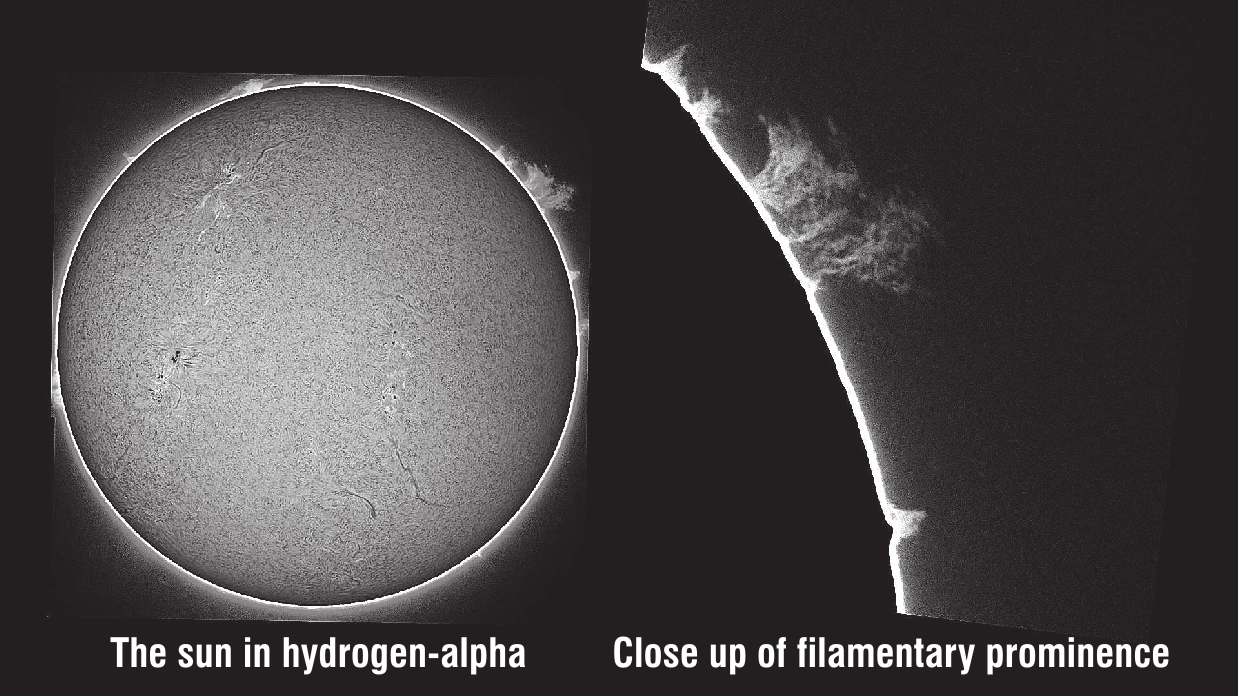
If you think that astronomy is purely a nocturnal hobby, you would be mistaken. One star, the sun, is visible every cloudless day.
Rather than being a distant irresolvable pinpoint, our closest star is, on a cosmic scale, so close that, with the right equipment, we can see incredible ever-evolving details in its complex atmosphere.

Scientists call this light H-alpha (Hydrogen-alpha) emission. The wonderful thing about H-alpha is that it allows us to see details on the solar disk that are impossible to view with the unaided eye.
Last weekend, sunny weather made conditions perfect for solar observation. So, just after sunrise on Saturday, I set up my equipment in my garden.
Keen astronomers know that the best time to study the sun is early in the day. That’s because solar radiation heats the atmosphere and makes it more turbulent later in the day.
As the sun cleared the trees, I got my first view. Wow! What a sight greeted my eyes.
The sun, a seemingly featureless yellow orb to the naked eye, was transformed into a dynamic, churning ball of plasma with intricate structures visible across its disc.
I could see dark sunspots, areas of intense magnetic activity corresponding to cooler solar surface regions. Bright regions, called plages, surrounded the sunspots, indicating areas of intense magnetic field and increased solar activity.
I also caught sight of some beautiful filamentary prominences. These long, thin plasma tubes are magnetically suspended above the solar surface. Prominences can extend for thousands of kilometres and sometimes rapidly change as the magnetic field lines that envelop and constrain them become disrupted.
Witnessing the complex interplay of magnetic fields, plasma, and radiation that drives solar activity was awe-inspiring. As I headed off for breakfast, my mind was buzzing with ideas.
Solar astronomy is a fascinating field with important implications for understanding the sun's influence on Earth's climate and space weather.












